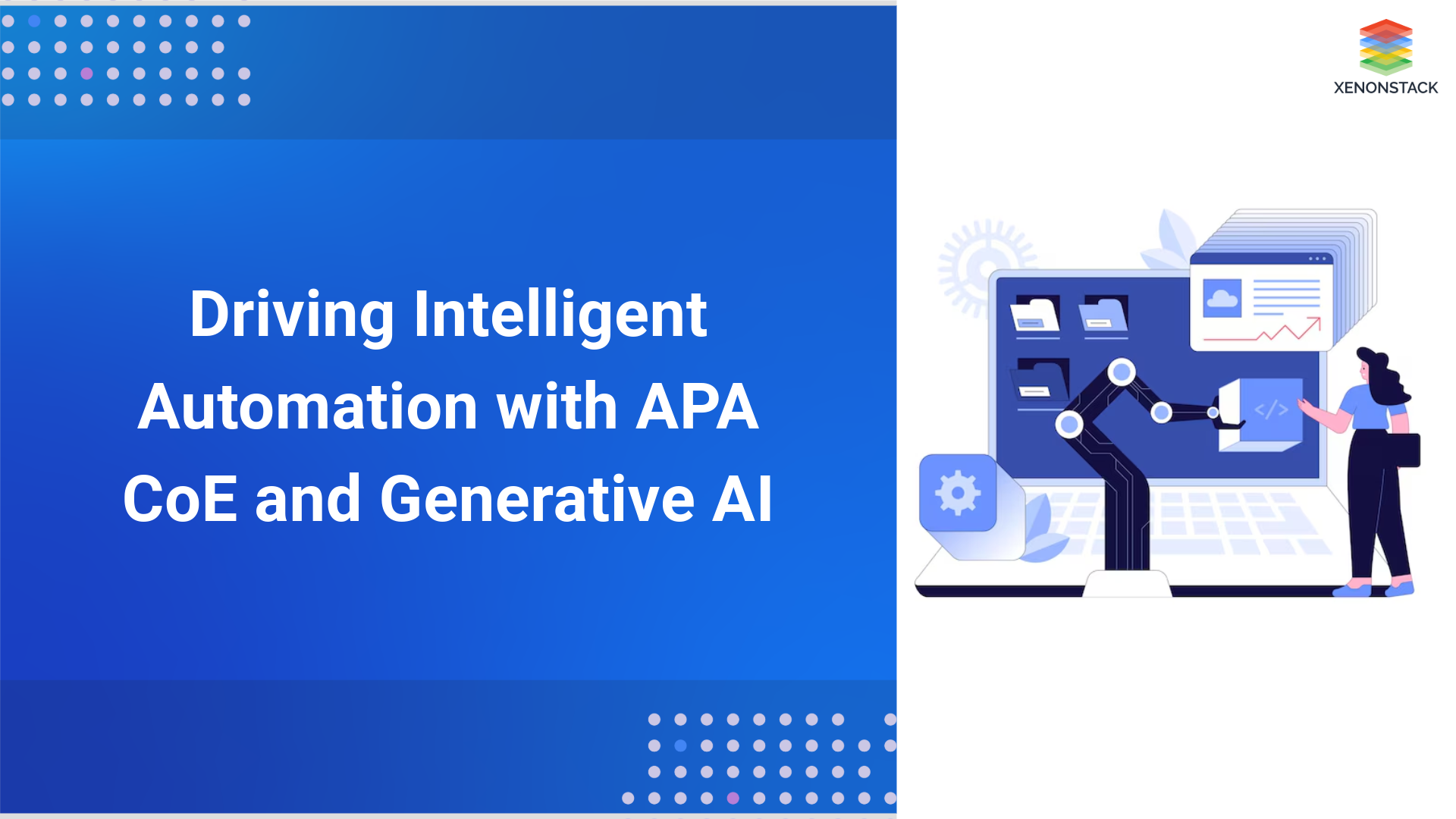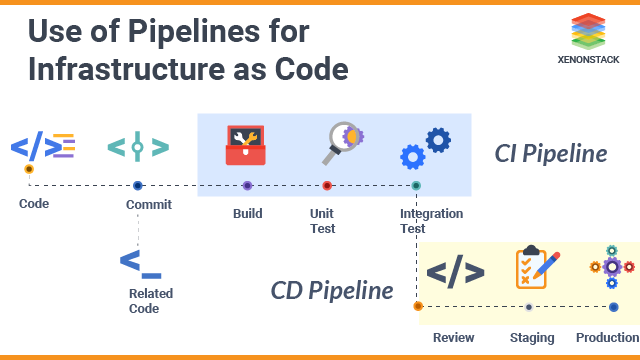
Exploring the Agentic Process Automation Center of Excellence Concept
How can firms enhance cost efficiency and accelerate digital transformation? By leveraging Agentic Process Automation (APA), businesses are moving beyond traditional approaches. While Robotic Process Automation (RPA) was once essential for automating repetitive tasks, newer alternatives like Generative AI and AI Agents are now automating complex workflows and enabling autonomous decision-making.
This shift moves beyond simple tasks to agentic workflows and agentic processes, optimizing operations across departments. Establishing an Automation Center of Excellence (CoE) helps scale AI-powered automation effectively, driving business efficiency and process optimization.
Generative AI showcases its remarkable capabilities, pushing the boundaries of creativity and innovation across healthcare, art, education, and more.
The Evolution of Automation: RPA to Agentic Process Automation
When performing routine, repetitive, and prescribed processes like data entry, processing of invoices, and simple customer relations services, RPA uses software robots or bots. The use of these bots minimizes the interactions needed by humans in performing these tasks, allowing human resources to be redirected to more efficient activities. Nonetheless, RPA has its limitations; it often forms a rigid structure and faces challenges in creating a blueprint to execute the next process. It is also not well-suited for handling unstructured data and/or dynamic workflows.

That is where Agentic Process Automation (APA) comes in, with Generative AI enabling APA systems to dynamically learn and adapt business processes based on changes in the business environment. With AI, this goes beyond automating straightforward tasks—intelligent automation can now be applied to workflows that are complex in terms of judgment, decision-making, or even creativity.
The Role of the Agentic Process Automation Center of Excellence
The APA Center of Excellence (CoE) serves as a central hub within an organization, focusing on the integration, governance, and scaling of Agentic Process Automation (APA) technologies. In the APA CoE, the emphasis is on automation to achieve business goals through efficient resource utilization and driving innovation across departments.
-
Strategy Development: APA is a crucial organizational initiative, and this vision aligns it with broader corporate objectives, ensuring that automation efforts are consistent with strategic goals. This involves identifying high-value areas for automation, selecting the appropriate technologies, and establishing performance metrics.
-
Governance and Best Practices: The APA CoE standardizes procedures for executing and scaling APA enterprise-wide. Ethical considerations, data privacy, and regulation compliance are key aspects to address in the governance framework.
-
Knowledge Sharing: The CoE fosters collaboration between business units, sharing best practices and providing team member training to interact effectively with intelligent automation systems. By managing APA initiatives through a central hub, organizations can ensure the long-term sustainability and effectiveness of their automation efforts.
The Impact of Generative AI on APA
Generative AI is a key advantage of Agentic Process Automation (APA), as it introduces learning capabilities where inputs and patterns generate new material, solutions, or even data. In the context of APA, Generative AI can creatively automate tasks traditionally dependent on human judgment, enhancing decision-making and enabling more efficient workflows. The integration of Generative AI within the APA framework brings several key benefits:
Real-World Applications of Agentic Process Automation and Generative AI
Generative AI, combined with Agentic Process Automation (APA), enables organizations to execute autonomous, real-time decision-making. Unlike traditional RPA, which focuses solely on automation without decision-making, Agentic Automation accelerates adaptability and efficiency through intelligent self-learning mechanisms. Below are examples of how this technology revolutionizes various industries:
Health Care
Problem: Traditional, manual decision-making in healthcare, such as patient registration, scheduling, and care provision, often leads to delays and inefficiency in meeting patient needs.
APA Solution: Agentic AI automates and dynamically adjusts healthcare workflows through real-time analysis of patient data. It learns about patient interactions, preferences, and medical conditions, adapting workflows autonomously to ensure personalized care.
Key Benefits:
-
Adaptive Workflows: Customizes workflows with real-time information, reducing wait times and improving service delivery.
-
Real-Time Decision Making: Continuously evolves based on patient conditions or preferences, optimizing service delivery.
-
Better Outcomes: Ensures patients receive timely care, improving health-related outcomes.
Insurance
Problem: Due to manual intervention, processing insurance claims takes time, and errors are common. While RPA can handle mundane tasks, it cannot judge differences and make immediate decisions about claim validity.
APA Solution: Agentic AI takes full responsibility for the entire claims process, from data extraction to validity determination. It adjusts workflows in real time to detect patterns such as potential fraud or mismatches, enabling quicker decision-making on claims.
Major Benefits:
-
Autonomous Decisions: Makes judgments on claims without human involvement, eliminating delays.
-
Real-Time Fraud Identification: Continuously scans for inconsistencies and irregularities, providing early fraud detection.
-
Claims Handling Optimization: Modifies workflows based on real-time data to streamline and improve claims accuracy.
Discover how AI agents are transforming the insurance industry by enhancing decision-making and operational efficiency. Click here to learn more about the future of insurance with Agentic AI!
BFSI (Banking, Financial Services, and Insurance)
Problem: Financial institutions struggle to adapt investment strategies quickly in response to volatile market conditions. Human decision-making is often slow and reactive, leading to missed opportunities and increased risk.
APA Solution: APA analyzes market trends, client portfolios, and external data in real time, making investment decisions based on updated performance indicators and risks. It automatically adjusts portfolios when volatility is detected, ensuring fast, knowledgeable decisions without human intervention.
Major Benefits:
-
Dynamic Strategy Adaptation: APA automatically updates strategies based on real-time inputs, ensuring timely decisions.
-
Risk Control: Detects market changes and adjusts portfolios accordingly without direct intervention.
-
Immediate Decisions: Quickly responds to changing financial conditions, optimizing resource utilization.
Manufacturing
Problem: Traditional maintenance schedules in manufacturing are reactive, with equipment failure causing significant downtime. Conventional methods rely on pre-set schedules or human monitoring, leading to inefficiencies.
APA Solution: APA leverages IoT sensors and real-time performance data to predict when maintenance is required. The system autonomously schedules maintenance and alerts staff, ensuring timely action to keep machines running smoothly.
Key Benefits:
-
Predictive Maintenance: Predicts issues and schedules maintenance at the optimal time.
-
Less Downtime: Minimizes unplanned downtime by proactively addressing potential problems.
-
Optimized Efficiency: Uses real-time and historical data to make proactive decisions that enhance productivity.
Key Advantages of Integrating Generative AI with Agentic Process Automation
The combination of Generative AI with Agentic Process Automation (APA) brings numerous tangible advantages to businesses:
Increased Efficiency
By freeing decision-making from manual work, APA significantly reduces operational costs and shortens task durations. Research indicates that 70% of tasks can be automated by AI, cutting working costs by up to 30%, which could boost the global economy by $2.6 to $4.4 trillion annually.
Accuracy
Generative AI enhances decision-making by improving data analysis and reducing errors and inconsistencies. Studies show that AI can reduce data errors by 50%, ensuring higher-quality, more consistent decisions.
Scalability
APA systems, powered by AI, scale seamlessly with increasing business complexity without major redesigns. AI handles increased data flow and expanding workflows, allowing businesses to manage growing work demands and expand operations effortlessly.
According to a Google Cloud study, 70% of companies experienced an increase in ROI after adopting Generative AI technologies, which can significantly enhance Agentic Process Automation efforts.
Overcoming Challenges in Agentic Process Automation Implementation
While the benefits of APA are numerous, there are several challenges to consider:
-
Complexity of Integration: Integrating APA into existing IT infrastructure can be complex, especially when legacy systems are involved.
-
Security and Privacy: With any AI-based technology, data security and privacy are paramount. Enterprises must ensure their APA solution adheres to relevant standards and regulations.
-
Skill Gaps: To fully maximize the potential of APA, businesses must provide proper training for employees to operate AI-based technologies and manage new automation-driven roles.
The Future of Intelligent Automation with Agentic Process Automation CoE
Agentic Process Automation (APA), driven by Generative AI, is paving the way for the future of intelligent automation. APA promises significant operational benefits for businesses by automating not just routine tasks but also complex processes that require decision-making and judgment. As more businesses adopt intelligent automation, those that successfully integrate APA will gain a competitive edge, driving innovation and improving efficiency across all aspects of their operations.
In summary, APA is more than just automation—it is empowerment. It empowers businesses to think creatively, adapt swiftly to change, make informed decisions, and reduce operational complexity. The combination of APA and Generative AI will ensure that businesses remain ahead in an increasingly automated world.
Taking Action: Next Steps for Agentic Process Automation Success
Connect with our experts to explore how implementing a compound AI system can drive decision-centric strategies across industries and departments. Discover how Agentic Workflows and Decision Intelligence, powered by APA and Generative AI, can help organizations optimize IT support and operations. By leveraging APA solutions and the capabilities of a robust APA Center of Excellence (CoE), businesses can enhance efficiency, responsiveness, and automation at scale.



